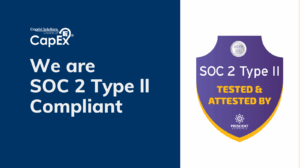Capital expenditure, commonly known as CapEx, refers to the investments made by a business in assets that will yield benefits beyond the current fiscal year. These investments are critical to the growth and sustainability of a business, but they can also be a source of financial risk if not managed correctly. Here are five common mistakes that businesses make when it comes to CapEx:
- Failing to Plan for the Long-Term Businesses often focus on short-term gains, which can lead to poor investment decisions. A common mistake is failing to plan for the long-term and investing in assets that may quickly become obsolete. It is important to consider the useful life of an asset and factor in the potential for technological advancements that may make it outdated in the near future.
- Overestimating the Benefits of the Investment Another common mistake is overestimating the benefits of the investment. Businesses may assume that an investment will yield significant returns without considering all the factors that may impact its success. This can lead to poor investment decisions and a failure to achieve the desired ROI.
- Failing to Consider the Total Cost of Ownership Businesses often focus on the upfront cost of an asset without considering the total cost of ownership. This includes maintenance, repairs, and operational costs over the useful life of the asset. Failing to factor in these costs can lead to unexpected expenses and impact the financial health of the business.
- Not Aligning CapEx with Business Strategy CapEx investments should be aligned with the overall business strategy. A common mistake is investing in assets that do not support the business objectives, resulting in wasted resources and missed opportunities. Before making any investment, it is important to consider how it aligns with the company’s goals and objectives.
- Poor Project Management Finally, poor project management can lead to CapEx investments that fail to deliver the expected returns. This can result from a lack of project planning, ineffective execution, and poor communication. It is critical to have a clear project plan, established timelines, and regular communication to ensure that the investment is successful.
In conclusion, CapEx investments are a critical aspect of business growth and sustainability. To avoid these common mistakes, businesses should plan for the long-term, accurately estimate the benefits of the investment, consider the total cost of ownership, align CapEx with business strategy, and have effective project management in place. By taking a strategic approach to CapEx investments, businesses can maximize their returns and minimize financial risk.





